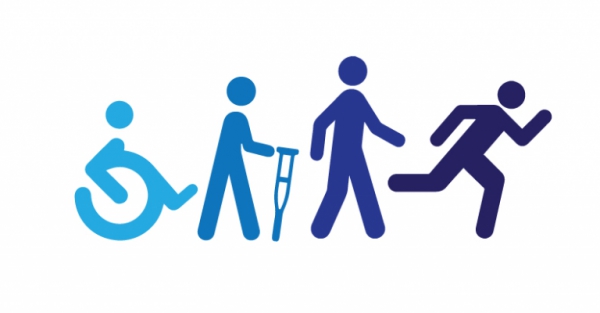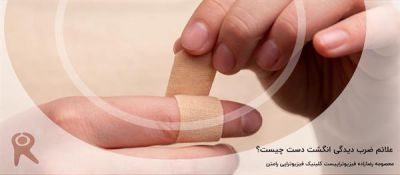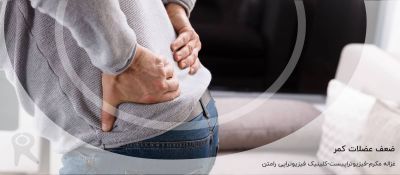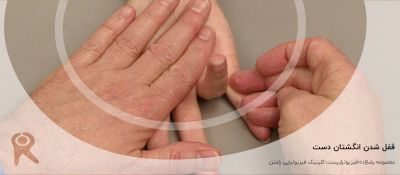GBS can also be classified in the following categories:
- AIDP (Acute inflammatory demyelinating polyneuropathy): the immune response damages the myelin coating and interferes with the transmission of nerve signals.
- Axonal can be further classified into:
• Acute motor axonal neuropathy (AMAN)
• Acute motor sensory axonal neuropathy (AMSAN) the above two, the axons themselves are damaged by the immune response. - Miller Fisher Syndromes is a rare, acquired nerve disease that is a geographically variable variant of GBS observed in about 1% to 5% of all GBS cases in Western countries yet up to 19% and 25% in Taiwan and Japan respectively
Aetiology
The Guillain-Barre syndrome (GBS) and its variants are considered post-infectious, immune-mediated neuropathies. Evidence from animal models suggests a key role of molecular mimicry. In Campylobacter jejuni gastrointestinal infections, a lipooligosaccharide present in the outer membrane of the bacteria is similar to gangliosides that are components of the peripheral nerves. Therefore, an immune response triggered to fight infection can lead to a cross-reaction on host nerves.
Many infections have been linked with GBS. The most common are gastrointestinal or respiratory illnesses. Up to 70% of patients have reported an antecedent illness in the 1 to 6 weeks before the presentation of GBS. During the Zika virus outbreak, many GBS cases were described[4] and the results of this study indicate GBS pathophysiologic mechanisms that may be more common after Zika infection. Case reports detail many other possible etiologies linked to GBS including medications and surgeries
In 1976, flu vaccination against the influenza A/H1N1 antigen led to a well-documented, increased incidence of cases of GBS; however, further surveillance data of flu vaccinations in subsequent years have described only one additional case of GBS for every 1 million vaccines. Subsequent studies estimate that developing GBS after a flu infection is up to 7 times more likely than developing GBS after a vaccination.
Pathophysiology
The pathophysiology of GBS is complex. GBS is considered to be an autoimmune disease triggered by a preceding bacterial or viral infection. Campylobacter jejuni, cytomegalovirus, Epstein-Barr virus and Mycoplasma pneumoniae are commonly identified antecedent pathogens.
In the acute motor axonal neuropathy (AMAN) form of GBS, the infecting organisms probably share homologous epitopes to a component of the peripheral nerves (molecular mimicry) and, therefore, the immune responses cross-react with the nerves causing axonal degeneration; the target molecules in AMAN are likely to be gangliosides GM1, GM1b, GD1a and GalNAc-GD1a expressed on the motor axolemma. In the acute inflammatory demyelinating polyneuropathy (AIDP) form, immune system reactions against target epitopes in Schwann cells or myelin result in demyelination; however, the exact target molecules in the case of AIDP have not yet been identified.
The body's immune system begins to attack the body itself, The immune responses causes a cross-reaction with the neural tissue. When myelin is destroyed, destruction is accompanied by inflammation. These acute inflammatory lesions are present within several days of the onset of symptoms. Nerve conduction is slowed and may be blocked completely. Even though the Schwann cells that produce myelin in the peripheral nervous system are destroyed, the axons are left intact in all but the most severe cases. After 2-3 weeks of demyelination, the Schwann cells begin to proliferate, inflammation subsides, and re-myelination begins.
While GBS is the most common cause of acute paralysis, the exact pathogenesis is still unclear. The progression of demyelination appears different in AMAN type of GBS versus AIDP type. Nadir is the point of greatest severity and patients with AMAN type reach it earlier.
Epidemiology
Incidence: The annual incidence of GBS in the USA is 1.2-3 per 100,000 inhabitants; GBS has been reported throughout the world. Most studies show annual incidence figures similar to those in the United States.
Age: The annual mean rate of hospitalizations in the United States related to GBS increases with age, being 1.5 cases per 100,000 population in children under 15 years of age, and peaking at 8.6 cases per 100,000 population in 70-79 year olds
Gender: GBS has a male-to-female ratio of 1.5:1.
Clinical Presentation
The typical patient with GBS presents 2-4 weeks following a relatively benign gastrointestinal or respiratory illness with complaints of finger dysesthesias and proximal muscle weakness of the lower limbs. The weakness may progress over hours to days to involve the arms, trunk, cranial nerves, and muscles of respiration. Variants of GBS may present as pure motor dysfunction or acute dysautonomia. a. “Typical” 'GBS is an acute, predominantly motor neuropathy involving distal limb paresthesias, relatively symmetric leg weakness, and frequent gait ataxia.
- Most cases will have subsequent arm weakness, and possibly the weakness of facial, ocular, and oropharyngeal muscles.
- Weakness is always bilateral, although some asymmetry in onset and severity is common.
- Proximal muscle weakness very frequent, especially initially, with subsequent distal arm and leg weakness.
- GBS with a descending pattern of weakness seen in 14% cases; onset initially with cranial nerve or arm muscle weakness, followed by leg weakness.
- In 1/3 of cases, the degree of weakness in the arms and legs is roughly equal.
- Reduced or absent reflexes characterize GBS.
- Early loss of reflexes may be due to desynchronization of afferent impulses in reflex arc due to non-uniform demyelination.
- About 70% of patients present with loss of reflexes; less than 5% retained all reflexes during the illness
- The presence of intact reflexes should suggest an alternative diagnosis other than GBS.
- Sensory disturbance
- 50% will present with symmetric distal limb paresthesias, before clinically evident limb weakness. Early finger paresthesias suggest a patchy process, unlike the pattern seen with distal axonopathies.
- Paresthesias of trunk or face unusual, but sensory loss over the trunk frequent and a psuedolevel may be evident
- Beware if definite sensory level present as this may suggest structural cord disease
- Dysautonomia
- Occurs in about 65% of cases
- More frequent in patients with severe paralysis and ventilator difficulties but may develop in mild cases.
- Most common manifestations include cardiac dysfunction such as sinus tachycardia, sinus bradycardia, sinus arrest and other supraventricular arrhythmias, paroxysmal hypertension, and hypotension (especially postural),
- ICU monitoring necessary because of possible cardiac complications.
- Other features: ileus, urinary retention (1/4 cases), inappropriate ADH, altered sweating, mild orthostatic hypotension.
- Cranial nerve involvement is observed in 45-75% of patients with GBS. Cranial nerves III-VII and IX-XII may be affected. Common complaints include:
- Facial Palsy
- Diplopia
- Dysarthria
- Dysphagia
- Ophthalmoplegia
- Pupillary disturbances
- Facial and oropharyngeal weakness usually appears after the trunk and limbs are affected. The Miller-Fisher variant of GBS is unique in that this subtype begins with cranial nerve deficits[12].
Symptoms Progression
Antecedent Illness: Up to two-thirds of patients with GBS report an antecedent illness or event 1-3 weeks prior to the onset of weakness. Upper respiratory and gastrointestinal illnesses are the most commonly reported conditions. Symptoms generally have resolved by the time the patient presents with the neurological condition.
GBS Symptom progression: The mean time to the peak of symptoms is 12 days (from 1st neurological symptoms), with 98% of patients reaching a peak by 4 weeks. A plateau phase of persistent, unchanging symptoms then ensues, followed days later by gradual symptom improvement. Recovery usually begins 2-4 weeks after the progression ceases. The mean time to clinical recovery is 200 days.
Differential Diagnosis
- Acute peripheral neuropathies
- Toxic: thallium, arsenic, lead, n-hexane, organophosphate
- Drugs: amiodarone, perhexiline, gold
- Alcohol
- Porphyria
- Systemic vasculitis
- Poliomyelitis
- Diphtheria
- Tick paralysis
- Critical illness polyneuropathy
- Disorders of Neuromuscular Transmission
- Botulism
- Myasthenia gravis
- Central Nervous System Disorders
- Basilar artery occlusion
- Acute cervical transverse myelitis
Diagnostic Procedures
These include:
- Cerebrospinal fluid investigation: It will elevated at some stage of the illness but remains normal during the first 10 days. There may be lymphocytosis (> 50000000 cells/L).
- Electrophysiological studies: it includes nerve conduction studies and electromyography. They are normal in the early stages but show typical changes after a week or so with conduction block and multifocal motor slowing, sometimes most evident proximally as delayed F-waves.
The only way to classify a patient as having the axonal or nonaxonal type is electrodiagnostically. - Further investigative procedures can be undertaken to identify an underlying cause
For example: - Chest X-ray , stool culture and appropriate immunological tests to rule out the presence of cytomegalovirus or mycoplasma
- Antibodies to the ganglioside GQ1b for Miller Fisher Variant.
- MRI
- Lumbar Puncture: Most, but not all, patients with GBS have an elevated CSF protein level (>400 mg/L), with normal CSF cell counts. Elevated or rising protein levels on serial lumbar punctures and 10 or fewer mononuclear cells/mm3 strongly support the diagnosis.
Management
There is no known cure for Guillain-Barré syndrome. However, there are therapies that lessen the severity of the illness and accelerate the recovery in most patients. There are also a number of ways to treat the complications of the disease.
Medical Management
The mainstay of medical management of patients with GBS is
Plasmapheresis
In plasmapheresis, blood is removed from the body, the red and white blood cells are separated from the plasma and only the blood cells are returned to the patient. It is thought that removing the plasma eliminates some of the immune factors that are responsible for the disease progression. Plasmapheresis helps in following ways:
- Reducing the length of the illness
- Shortened time on mechanical ventilation
- Early ambulation
Intravenous immunoglobulins ( I.V.I.G)
Immunoglobulins are given intravenously which shows a positive impact on the speed of recovery. But it has been shown to be less effective than plasmapheresis.
Further Medical Management Can Be Done According to the Symptoms and the Complications
- Supportive Care
- ICU monitoring
- Basic medical management often determines mortality and morbidity.
- Ventilatory Support
- Atelectasis leads to hypoxia.
- Hypercarbia later finding; arterial blood gases may be misleading.
- Vidal capacity, tidal volume and negative inspiratory force are best indicators of diaphragmatic function.
- Progressive decline of these functions indicates an impending need or ventilatory assistance. Mechanical ventilation usually required if VC drops below about 14 ml/kg; ultimate risk depending on age, the presence of accompanying lung disease, aspiration
- risk, and assessment of respiratory muscle fatigue.
- Atelectasis treated initially by incentive spirometry, frequent suctioning, and chest physiotherapy to mobilize secretions.
- Intubation may be necessary for patients with substantial oro-pharyngeal dysfunction to prevent aspiration.
- Tracheostomy may be needed in patients intubated for 2 weeks who do not show improvement.
- Autonomic Dysfunction
- Autonomic dysfunction may be self-limited; do not over-treat.
- Sustained hypertension managed by angiotensin-converting enzyme inhibitor or beta-blocking agent. Use short-acting intravenous medication for labile hypertension requiring immediate therapy.
- Postural hypotension treated with fluid bolus or positioning.
- Urinary difficulties may require intermittent catheterization.
- Nosocomial Infections Usually Involve Pulmonary and Urinary Tracts.
- Occasionally central venous catheters become infected.
- Antibiotic therapy should be reserved for those patients showing clinical infection rather than colonization of fluid or sputum specimens.
- Venous Thrombosis Due to Immobilization Poses a Great Risk of Thromboembolism
- Prophylactic use of subcutaneous heparin and compression stockings.
Physiotherapy Management
Aims of physiotherapy management are:
- Regain the patient's independence with everyday tasks.
- Retrain the normal movement patterns.
- Improve patients posture.
- Improve the balance and coordination
- Maintain clear airways
- Prevent lung infection
- Support joint in functional position to minimize damage or deformity
- Prevention of pressure sores
- Maintain peripheral circulation
- Provide psychological support for the patient and relatives.
Respiratory Care
The common respiratory complications in the rehabilitation setting include incomplete respiratory recovery including chronic obstructive pulmonary disease, restrictive respiratory disease (pulmonary scarring, pneumonia), and trachitis from chronic intubation and respiratory muscle insufficiency. Sleep hypercapnia and hypoxia, which worsens during sleep can be the result of a restrictive pulmonary function.
Treatment methods are:
- Night time saturation records with pulse oximeter and bilevel positive airway pressure (BiPAP) may be indicated for the patients.
- Physical therapy measures (chest percussion, breathing exercises, resistive inspiratory training) may be required to clear respiratory secretions to reduce the work of breathing.
- Special weaning protocol to prevent over fatigue of respiratory muscles can be recommended for more severe patients with tracheostomy. Patients with cranial nerve involvement need extra monitoring as they are more prone to respiratory dysfunction.
- Patients should be encouraged to cease smoking.
- Posturally drain areas of lung tissues, 2-hourly turning into supine or side lying positions.
- 2-4 litre anaesthetic bag can be used to enhance chest expansion. Therefore, 2 people are necessary for this technique, one to squeeze the bag and another to apply chest manipulation.
- Rib springing to stimulate cough
- After the removal of a ventilator and adequate expansion, effective coughing must be taught to the patient










